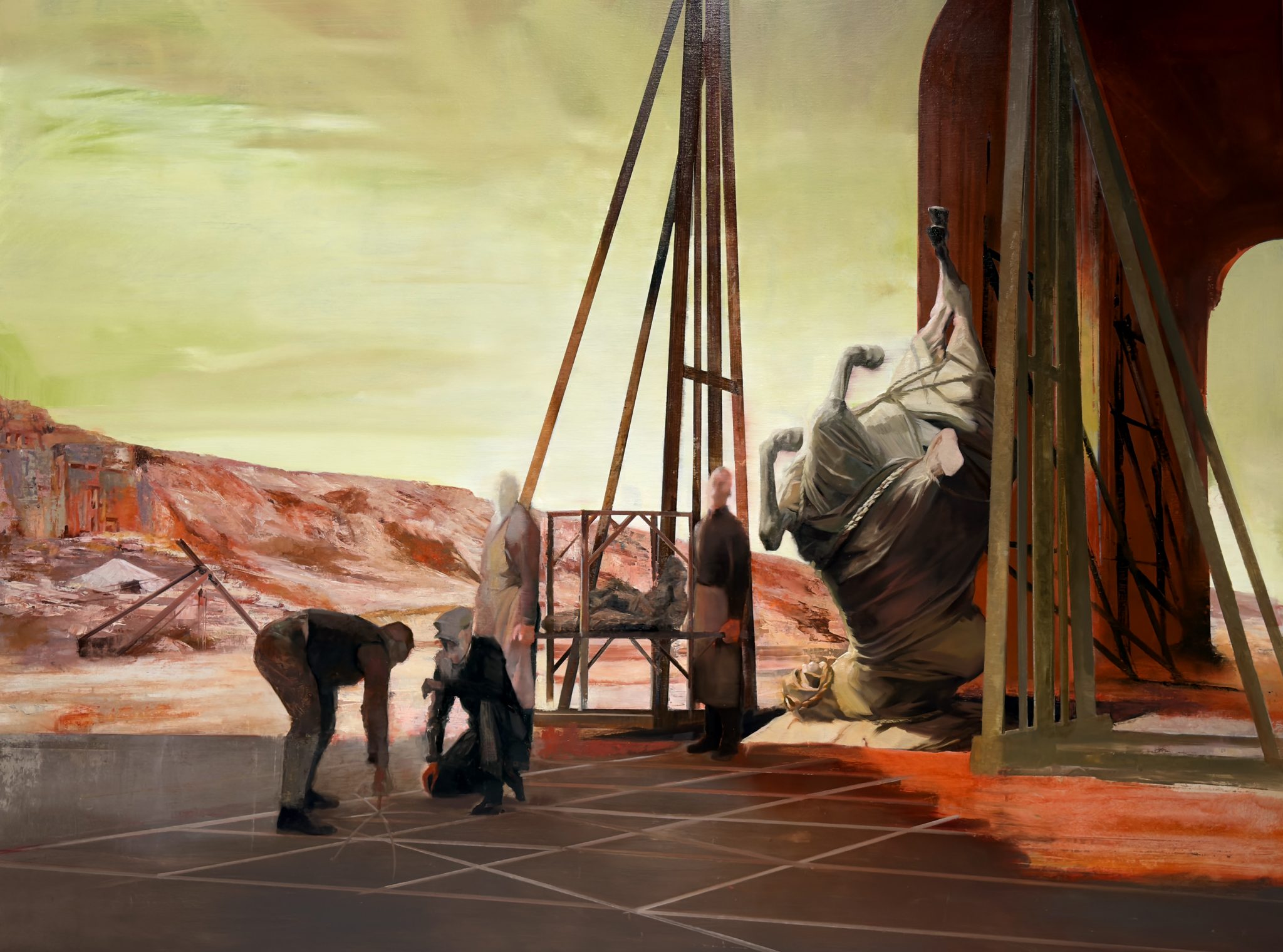The artist’s works at JD Malat Gallery retrofit digital forms of calculation into a visual history bound up in violence
As a painter who seeks, in his own words, ‘to make sense of the things we can’t see’, Tim Kent is well suited to a world in which many images are invisible to the unassisted human eye. Nonhuman vision, exemplified by QR codes, is the same world in which drone technology and ‘intelligent’ weapons use operational images to fulfil military objectives. By injecting his new series with the visual grammar of military targeting programs, Kent acknowledges that Western paintings have also been vehicles for regimes of oversight.
The paintings in Histories in Flux fuse neoclassical canons and contemporary circuits of surveillance by subjecting art-historical tropes – reclining nudes and equestrian monuments – to forms of digital visualisation. A trio of paintings, Odalisque (2023), Inclinations (2024) and The Reproduction’s Gaze (2024), integrate the figure from Ingres’s famous La Grande Odalisque (1814) into a painted dot-matrix, whose machinic precision elides seamlessly with the works’ slick surfaces. Elsewhere, Kent’s tiled pavement – more vector graphic than Renaissance grid – congeals with thick currents of oil that seem to disrupt any sense of coherent time or space. Procession (2024) halts the march of its headless spectre-courtiers via a controlled explosion of dark pigment, while the irradiated landscape of Past Again and Again (2024) reprises the humanoid figures and towering arcades of Giorgio de Chirico, whose shadows seemed always out of step with time.
Much like the ‘Metaphysical Painting’ developed by de Chirico and others over a century ago, these works are palimpsests of interpenetrating artefacts and contrasting styles held in irreverent suspension. Menagerie (2024) is a case in point: set in the hallowed halls of the Baroque English country house Castle Howard, the statue of a Winged Victory of Samothrace is out of place, while the walls are not so much structural frames as dissolving skins. In turn, Archive II (2023) renders its central sculpture of a falling horse as simultaneously plastic and transparent. The sculpture’s reappearance in other paintings, seen from different viewpoints, is evidence of the artist’s rotation of sculpted modelli as though with a cad program. The result is a series of paintings that absorb both analogue and digital modes of observation while challenging the reduction of life to a sequence of data points.
It was during the 1970s that Daniel Kahneman and Amos Tversky established that people’s memory of the past warps their judgement of the future. The same applies to algorithms that rely on incomplete or biased datasets to ‘optimise’ online experience. For Kent, if history is to teach us anything, it must be ‘assaulted’ – dismantled and reconfigured in order to explode the cult of progress on which neoliberalism depends. By retrofitting painting with forms of digital calculation, these works challenge the antiquated terms by which we imagine the future. As By Careful Design (2024) reminds us – with its besuited figures seated around a neoclassical boardroom’s table, their faces smeared into sinister anonymity – the results of painting’s controlled calculations have tended to be the same: a white cube and a faceless corporate regime.
Histories in Flux at JD Malat Gallery, London, 2 May–1 June
